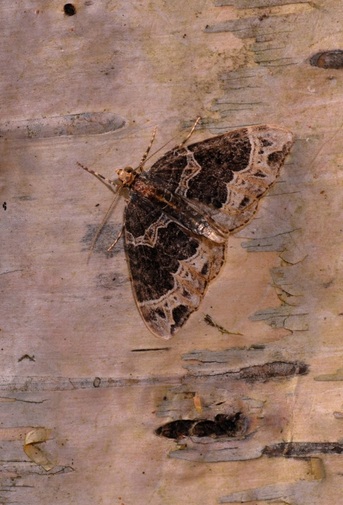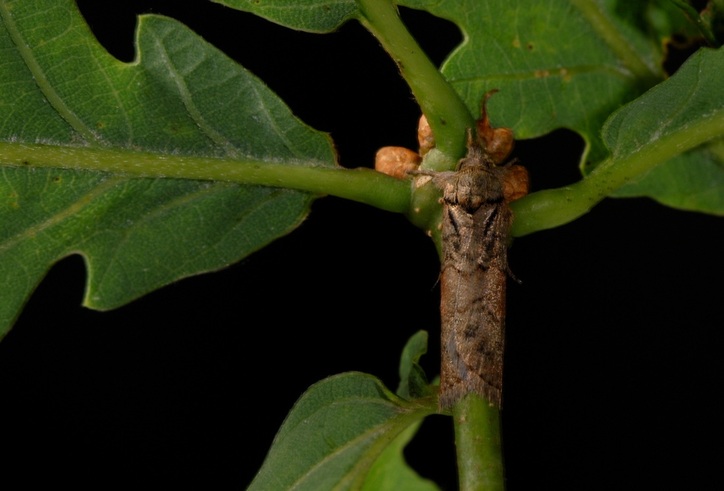Here is Stuart's week 10 report:
"The weather became unsettled this week, and night-time temperatures fell off slightly from those of prior weeks. Nevertheless, on the evening of 30th July, forecasts informed that there would be no overnight rainfall or through the following morning – so, confidently, I left my trap quietly doing its business in its usual spot in the woodlands. However, when I looked out of the window in the early morning, I witnessed the aftermath of a great deluge! As I walked to the trap-site, the small woodland stream, usually little more than a gentle trickle, was now a raging torrent. My fears where confirmed when I reached the trap and saw that the mercury vapour bulb had shattered (but still burning bright). Inside the trap, a set of soggy cardboard egg cartons provided limited shelter for over 300 weather-beaten moths. Two-thirds of the catch was either a Bird-cherry Ermine (Yponomeuta evonymella) or a Large Yellow Underwing (Noctua pronuba) – two very common and widespread species that evidently occur in good numbers and find light irresistible.
In amongst the Ermines and Yellow Underwings was a single Old Lady (Mormo maura). This large moth is unmistakable, even when most of its markings have been worn, or washed, away! It is widespread in Britain but described as ‘local’ rather than common. However, although it may be drawn by light, it enters the trap infrequently, and as such, may be under-recorded by trappers. Svensson’s Copper Underwing is a moth of similar hue to the Old Lady. In contrast however, it looked very ‘fresh’ and its colouration was deep and rich. The species is very similar to the closely-related Copper Underwing (Amphipyra pyramidea), but a combination of subtle features suggested this individual was very likely to be A. berbera. Other infrequent visitors to the trap this week included a new addition to the list of ‘thorns’ (see weeks 5 and 9 for others) – the Dusky Thorn, a Small Phoenix and Oak Nycteoline – a diminutive macromoth that, when I placed it on an oak tree to photograph it, it wrapped its wings around the shoot to hide its outline and promptly ‘disappeared’."
Stay tuned weekly for more 'Stu's Top Moths' or follow us on twitter for updates and photos of moths and other wildlife around Durham University!





 RSS Feed
RSS Feed
